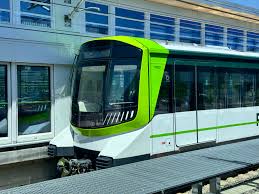
Introduction
The Réseau express métropolitain (REM) in Montreal is set to revolutionize the city’s public transportation system. As one of the largest infrastructure projects in North America, the REM aims to provide a modern, efficient, and eco-friendly transit option for the rapidly growing population of the metropolitan area. With increasing urbanization and a need for sustainable solutions, the REM promises to enhance connectivity, reduce congestion, and lessen the environmental impact associated with traditional transportation methods.
Key Features of the REM
One of the standout features of the REM is its automated light rail technology. The network spans over 67 kilometers, including 26 stations, connecting the city center with suburbs and key areas such as Montreal-Trudeau International Airport. It is anticipated that this new transportation system will offer frequent service and significantly improve travel times for commuters.
The REM is a crucial component of the Government of Quebec and the Caisse de dépôt et placement du Québec’s vision to shift the transit paradigm in the region. Environmental benefits are at the forefront, as the REM is expected to remove approximately 500,000 car trips per day, resulting in a substantial decrease in greenhouse gas emissions.
Current Developments and Timeline
As of October 2023, significant progress has been made on the REM construction, with several sections scheduled to begin operations by late 2024. The project has faced challenges, including delays and budget revisions, but officials remain optimistic about its completion timeline. Public interest continues to grow, as residents anticipate a faster, more convenient mode of transport.
Recent updates from the REM team indicate that construction is ahead of schedule in various areas, particularly in the completion of tunnels and stations, which is a positive sign for the anticipated timeline.
Conclusion
The REM project represents a transformative step for Montreal’s public transportation system, enhancing accessibility and reducing congestion in the city. With the launch of the new light rail system, residents can expect improved travel experiences and a more environmentally friendly option for their daily commutes. As the project progresses and opens new pathways for connectivity, the significance of REM will extend beyond just public transport, potentially expanding economic opportunities and urban development in the region. The completion of the REM could very well signal a new era of sustainable living and commuting in Montreal.



